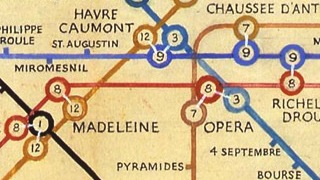How Walks in Nature Restore the Mind

What’s the Latest Development?
The theory that natural landscapes recharge minds that have been stretched thin by harsh urban environments is not new, but only recently has the theory become testable. Thanks to portable EEG machines, which measure brain activity in an unobtrusive manner, researchers at Heriot-Watt University in Edinburgh and the University of Edinburgh were able to measure the brain patterns of 12 volunteers as they walked through three different sections of the city over the course of an hour and a half. The walk took the volunteers through a historic shopping district, a natural park and finally through a busy downtown neighborhood.
What’s the Big Idea?
What researchers found confirmed their previous ideas on how the surrounding physical environment affects the brain’s attentiveness. “When the volunteers made their way through the urbanized, busy areas…their brain wave patterns consistently showed that they were more aroused, attentive and frustrated than when they walked through the parkland, where brain-wave readings became more meditative. While traveling through the park, the walkers were mentally quieter.” Natural environments still engage the brain, say researchers, holding our attention while simultaneously allowing for reflection.
Photo credit: Shutterstock.com




